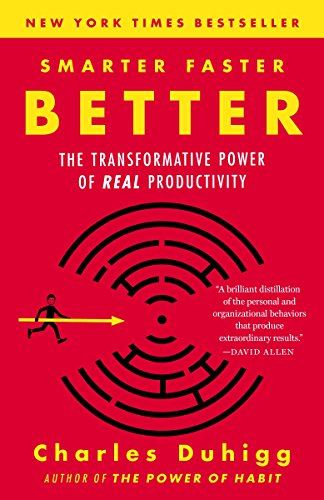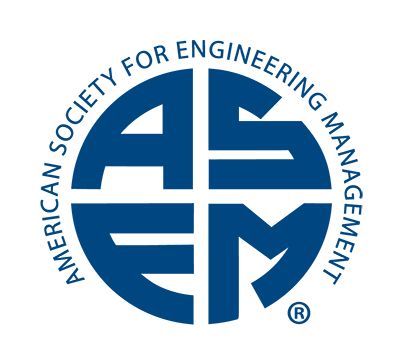
Smarter, Faster, Better: The Transformative Power of Real Productivity by Charles Duhigg.
Random House: New York (2017). 400 pages. US$18.00 (paperback).
Among other tasks, engineering managers are charged with improving productivity. Equipment operation and movement of materials must be efficient and without waste. Moreover, we demand that our teams also increase productivity as companies continually seek to do more with less.
But how, you might ask, do we improve the productivity of people? Charles Duhigg's recent book, Smarter, Faster, Better, offers several tips that engineering managers can readily apply to improve our own personal and professional productivity. Smarter, Faster, Better is an easy book to read, and each principle is illustrated by engaging stories, narratives, and examples.
First, the author teaches self-motivation is key to productivity. In Chapter 1, we learn that taking control of even the smallest detail can make the difference between motivating decisions to take control of our situation or being a passive bystander. Duhigg shares a story from the Marine Corps. New recruits were less confident and less motivated than in the past. So, a new training program forced recruits to make small decisions. These choices helped build confidence and self-efficacy so that graduates of basic training developed necessary mechanical, emotional, and team skills to become successful Marines.
Teamwork is the focus of Chapter 2. Engineering managers are already aware of team dynamics leading to success, or not, in any project. Duhigg’s research reinforces the role of diversity in building successful and productive teams. Of course, diversity is far more than demographics. True team diversity must include elements of work experience, educational background, and industry participation. Diverse teams thrive with open dialogue and generate more creative solutions to engineering problems.
Chapter 3 discusses focus as a way to improve productivity. Letting focus become tunnel vision can be dangerous, as the author illustrates with a tragic example. Airplane pilots were so focused on understanding data from their instruments that they were unable to identify signs of an imminent crash. Instead, using tools such as mental models, we can frame a challenging situation into variables and conditions we do understand; thus, better addressing risk. The author illustrates this point with a touching story of a little baby's survival within the intensive care unit of a busy hospital.
Goal-setting and decision-making (Chapters 4 and 6) are intertwined for engineering managers. We have all heard of SMART goals (specific, measurable, achievable, realistic, and time-bound). However, like focus, Duhigg’s research found that as people drive to create measurable goals, we might miss larger growth opportunities. Instead, if we subdivide our largest strategic objective into smaller SMART goals, we can still enjoy the short-term accomplishments while sustaining longer range progress.
Decision-making, closely tied with setting goals, was briefly introduced in Chapter 1. Small choices motivate us to grow personally and professionally. Additionally, research shows that humans are very effective at making accurate predictions (leading to better decisions) with little data. In a famous study, regular people were pitted against experts to forecast national intelligence threats. With only a brief training in probabilistic theory, the novices outperformed the highly trained and experienced experts. The most successful executives often focus their decisions on information and situations that are unknown as compared to analyzing detailed data sets. We, as engineering managers, can certainly apply these learnings to our day-to-day activities to improve team productivity and to make more rapid decisions.
Chapter 7 discusses innovation. Consistent with the emerging trend of Design Thinking for new product development, Smarter, Faster, Better documents evidence of small trials to improve innovation success. Getting quick feedback and making small adjustments through rapid experimentation leads to higher success rates in innovation. Duhigg also recommends changes in team structure if creativity encounters natural barriers. He shares an engaging story from the development of the Disney movie “Frozen”. When the design team got stuck, innovation and creativity were jump-started by just a small change in team leadership.
Finally, Chapter 8 describes how to manage the overwhelming amount of data coming into our lives and processes. The key to managing data is to convert it into information. One bank was able to convert data into information and see increased collections on credit card debt. Instead of simply tracking how many payments were made, the bank began analyzing when payments were made, especially after phone calls at different times of the day. Information included background noise and the gender of the card holder. Engineering managers can apply these learnings to better analyze process, product, and sales data to improve efficiency and productivity in our systems.
Overall, Smarter, Faster, Better is a great book to support our roles as leaders in engineering organizations. Most of us struggle with finding enough time in the day to do all our work. Yet, Duhigg’s tips to take control (even with small decisions) and to build diverse, problem-solving teams can help us become more productive in our jobs and in our personal lives. This book is recommended for engineers and engineering managers wanting to build successful careers with increased efficiency and productivity.
What is the biggest productivity challenge you face?
About the Author

Teresa Jurgens-Kowal is writer, speaker, and facilitator. Teresa founded Global NP Solutions to help organizations learn, adopt, transform, and sustain innovation. She frequently presents keynote presentations on innovation and design thinking.
Teresa is the co-editor of the PDMA Body of Knowledge 2nd edition and is the author of a popular book on innovation, The Innovation ANSWER Book.
Prior to founding Global NP Solutions, Teresa worked in R&D, process technology, innovation at ExxonMobil Chemical Company. She has degrees in Chemical Engineering and an MBA. She is a Certified Professional Engineering Manager. You can reach Teresa at info@globalnpsolutions.com.
